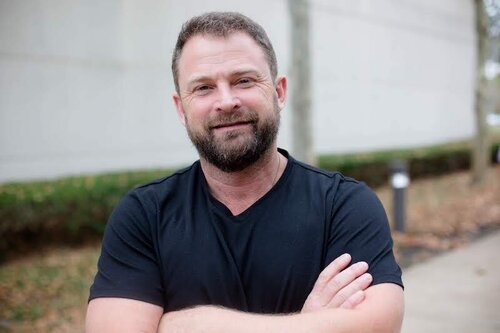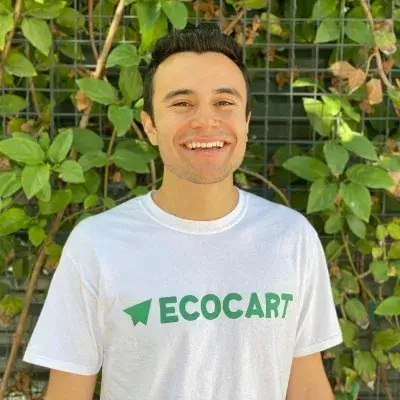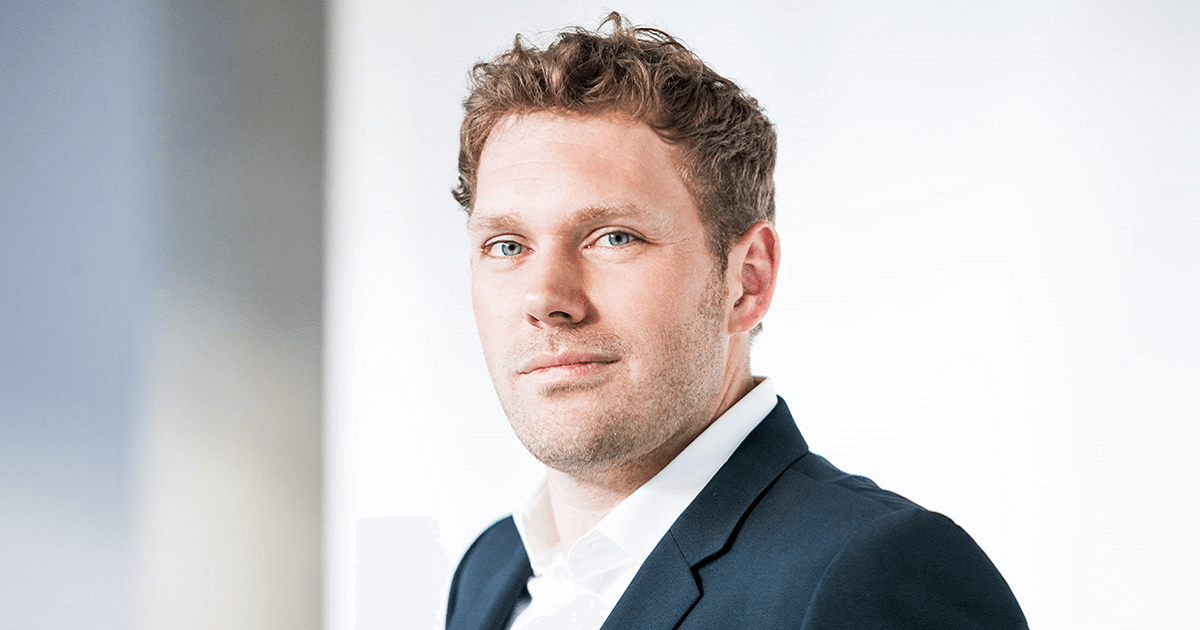Ready to build your own Founder-Led Growth engine? Book a Strategy Call
Frontlines.io | Where B2B Founders Talk GTM.
Strategic Communications Advisory For Visionary Founders
Actionable
Takeaways
Sometimes being early means waiting for the market to catch up:
Chris spent years building Authvia before the market was ready, describing how "channels sit" for years before they eventually activate. He emphasizes that conviction in your vision is crucial when you're ahead of market demand. B2B founders building transformative solutions should prepare for extended timelines and focus on building deep partnerships that will pay off when the market matures.
Focus on the financial buyer when there's no established category:
Without a clear buyer or budget line item, Chris found success by targeting CFOs and finance teams who could immediately see the cash flow impact of faster payments. He noted, "When you get into the office of the CFO, that group cares... I can get what was going to be paid in 30 days, paid in two hours." B2B founders should identify who benefits most financially from their solution and lead with those metrics.
Build infrastructure that makes partners look good:
Rather than trying to sell standalone solutions, Chris focused on creating technology that could be white-labeled by major payment and messaging companies. He explained, "Getting them to sell your stuff that looks and feels like your stuff is next to impossible. Getting them to sell their stuff that looks and feels like them is the home run." B2B founders should consider how their technology can enhance partners' existing offerings rather than compete with them.
Channel partnerships require massive upfront investment:
Chris candidly shared that the first five years of channel partnerships showed little return, saying "channels sit, right? And channels do nothing until they eventually do." However, this strategy ultimately provided access to enterprise customers that would have been impossible to reach directly. B2B founders pursuing channel strategies should prepare for long development cycles and ensure they have sufficient runway.
Target the intersection of multiple pain points:
Authvia succeeds by solving messaging, payments, and compliance challenges simultaneously. Chris described how customers quickly identify 17 different use cases once they understand the platform. B2B founders should look for solutions that address multiple related problems rather than point solutions, as this creates stronger value propositions and higher switching costs.
Conversation
Highlights
Authvia: Building the Future of Conversational Commerce Through Strategic Patience
In 2010, standing in a Walmart pharmacy line, Chris Brunner had an epiphany that would lead to a building an industry-leading conversational commerce platform. The moment crystallized when the VP of finance next to him explained why customers were still queuing up in person: “Well, they still got to pay.”
That simple observation sparked a realization about the missing piece in digital communication channels. “Every great communication channel, the web, you know, blew up once commerce hit, apps blew up once commerce hit, right?” Chris explains. “Messaging… commerce is that next big wave.”
In a recent episode of Category Visionaries, Chris Brunner, founder and CEO of Authvia, shared the decade-long journey of building infrastructure for a category that didn’t exist yet – and the strategic patience required to make it work.
The Contrarian Bet on “Dead” Technology
While everyone in the wireless industry was predicting the death of SMS, Chris saw the opposite trajectory. Coming from a background running mobile and interactive at Univision Communications, he witnessed the emergence of app fatigue in the late 2000s. “I realized that the most ubiquitous, most connected, most trusted forward communication globally was SMS,” he recalls.
The conviction wasn’t immediate. Chris spent two and a half years researching the space, calling companies, trying to acquire competitors. “I just spent time and I tried to buy companies that said they were doing this and it just all kept, you know, ending up, but it’s not happening. It’s not quite there.”
But the market validation was clear to him. “Everybody I spoke to said or I showed them at them and they’re like, oh, this is amazing. We were just a little early.”
Building the Invisible Infrastructure
Authvia’s approach was fundamentally different from the typical startup playbook. Instead of going direct to market, Chris focused on becoming the infrastructure layer that connects payments and messaging. “We connected 250 payment processors and gateways. We connected to all the major messaging and CPAAS companies and all the digital networks. I think over 300 in total collectively.”
The technology enables what Chris calls “tokenized payments” – leveraging existing payment relationships to create seamless transactions. “If you’ve ever paid a retailer or a merchant or an ISV or an enterprise, you know, ever paid them digitally before, we can go ahead and grab that token from that payment processor or gateway… and allow you just to be able to pay with a four digit, you know, alphanumeric code.”
The user experience is deceptively simple: “Hey, Brett, you know your four tires are ready for pickup. It’s going to be 1800 bucks. You want to buy the pay for that? Now reply to a 275 to pay these ending 1, 3, 4. Boom, it’s done.”
The Strategic Patience of Channel Partnerships
Perhaps the most counterintuitive aspect of Authvia’s strategy was their commitment to channel partnerships over direct sales. “I Can’t tell you how many investors have told me, why don’t you just go out and sign up 2000 dental offices, right?” Chris shares. “I’m like, yeah, I probably could have done that. I’d have a nice $2 million a year business, you know, and that would have been that.”
Instead, Chris chose the longer path: “My strategy early on was like we had to partner with and be the partner of choice for all the major payments companies and all the major messaging companies.”
The reality of this strategy was brutal. “Channels sit, right? And channels do nothing until they eventually do and then you look brilliant when they do… but meanwhile, for the other five years you look completely inept.”
But Chris understood the infrastructure play required this approach. “This space because it’s governed by wireless carriers, because it’s governed by big payments companies, it’s governed by WhatsApp or Meta, right? All these gatekeepers, all these toll booths.”
Finding the Financial Buyer in a New Category
One of Authvia’s biggest challenges was the absence of established buyers or budgets for their solution. “There’s no set buyer in an organization today for what we do,” Chris explains. “You have to kind of wrangle the right group of people together and then you’ll see the light bulbs going off.”
The breakthrough came when Chris realized he was targeting the wrong stakeholders. Product teams would dismiss the solution, but finance teams immediately grasped the value. “When you get into the office of the CFO, that group cares. That group’s like, wait a second, I can get what was going to be a, you know, paid in 30 days, paid in two hours.”
The financial impact was tangible: “We can change our DSOs by 62%. Right? Like, you know, I can take paper and cash and turn it into digital… I get rid of paper invoices. I don’t have to take payments over the phone.”
White-Label Strategy: Making Partners Look Good
A critical insight emerged about how to work with large enterprise partners. “Getting them to sell your stuff that looks and feels like your stuff is next to impossible,” Chris discovered. “Getting them to sell their stuff right on their paper that looks and feels like them is the home run.”
This realization shaped Authvia’s product development approach. “You’ve got to have years of buy in and years of research and then you’ve got to have the upswell from the market to say, yep, now’s the time for us to do this.”
The white-label approach meant extensive infrastructure investment. “We simply just do a configuration. It runs over those messaging rails and it runs over those payment rails. The consumer gets a request, makes a payment and state gets their money.”
Unexpected Market Validation
The first real validation came from an unlikely source: small utilities in rural communities. Working with a payments company that served about 300 utilities, Authvia started with “very small utilities, like a town of 5,000 like in northwest Florida or southeast Alabama.”
Initial skepticism was common. “We can get on phone calls to people and they’re like, oh, sweet my. You know, Bobby’s not going to pay that way. He likes to come in and drop off a check.”
But the results spoke for themselves: “Maybe nine months into it, were seeing upwards of 60% of people paying over text.” The feedback was revealing: “I’ve got three kids and two dogs and the mailboxes 400 yards away. And this just makes life easy.”
The Compound Effect of Use Cases
What started as a single payment solution evolved into something much broader. Chris describes how one banking partner brought them into a state government implementation: “We went in and we had, you know, one use case that they were trying to solve. It was like for landfills or something like that… By the time we left, there were 17 use cases.”
The applications expanded across sectors: “We could do taxes, we could do speeding tickets, we could do parking, we could do utilities, we could do, you know, all the things as they went through the ways that they need to get, you know, a hold of their constituents.”
The Long Game Mindset
Chris’s approach required extraordinary patience and conviction. “The last thing you want to do, you know, is dive in and do something that’s new and you know, potentially a game changer… when you’ve got, you know, kids in middle school and high school.”
But the conviction remained strong: “My conviction was high and my conviction has remained incredibly high over the years because it is just confirmed every single day with the types of brands, the types… enterprise customers, the SMBs they get on, it’s just inevitable.”
The entrepreneurial journey, as Chris puts it, is like “walking through the outback in flip flops. Like, everything around you is designed to kill you… everything around you is you’re constantly under pressure, you’re constantly kind of at risk.”
The Future of Conversational Commerce
Looking ahead, Chris sees massive potential: “I think conversational commerce… it’s a $5 trillion cam, like it is massive.” The infrastructure investments of the past decade are positioning Authvia for this larger opportunity.
The key insight remains unchanged: “When you start to think about the total amount of devices and connectivity that we’ve got going on globally, it’s absolutely insane.”
Authvia’s journey demonstrates that building transformative infrastructure often requires betting against conventional wisdom, investing in relationships that take years to mature, and finding the right buyers who understand the financial impact of new solutions. For B2B founders building in emerging categories, Chris’s experience offers a masterclass in strategic patience and the long-term thinking required to create entirely new markets.












































